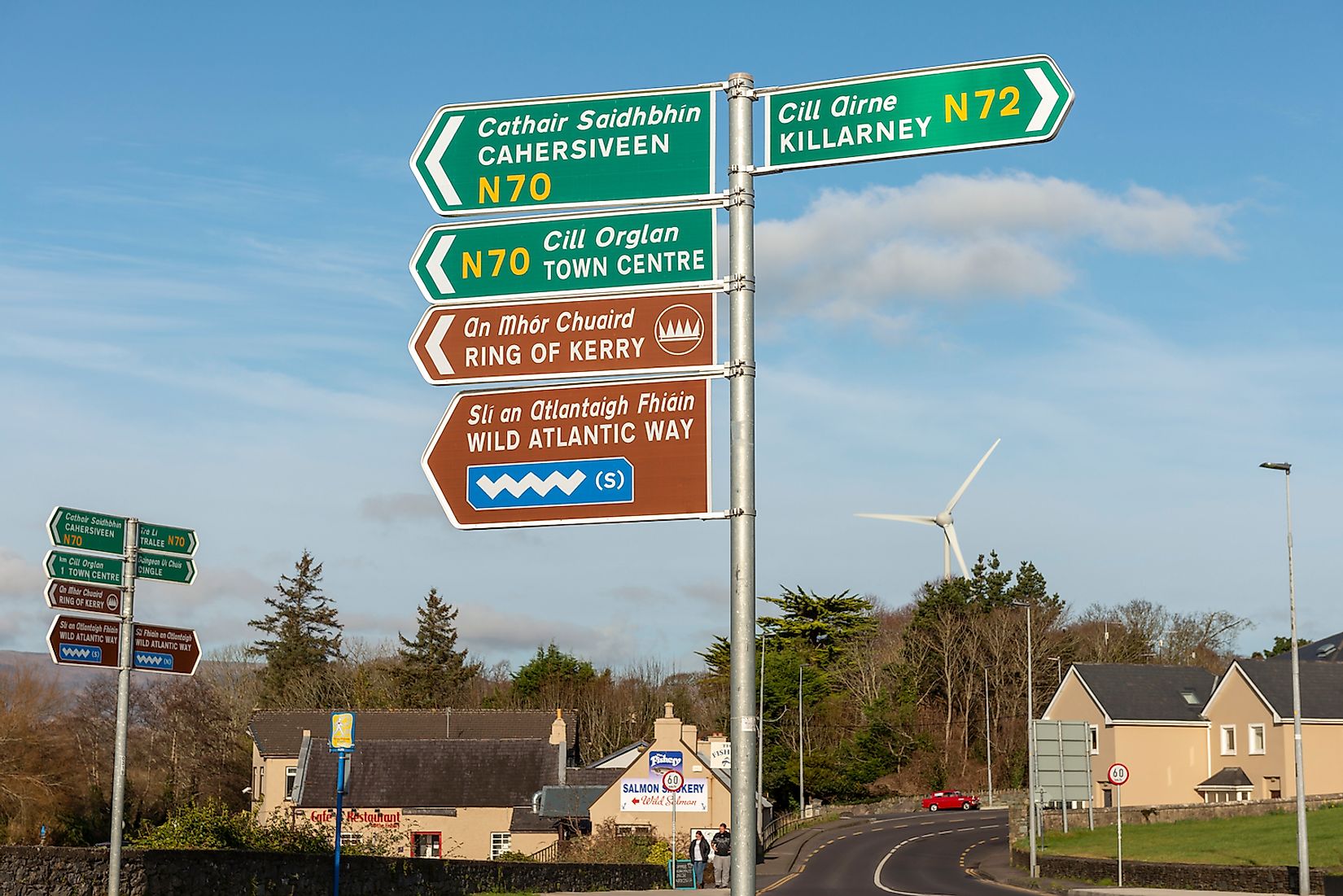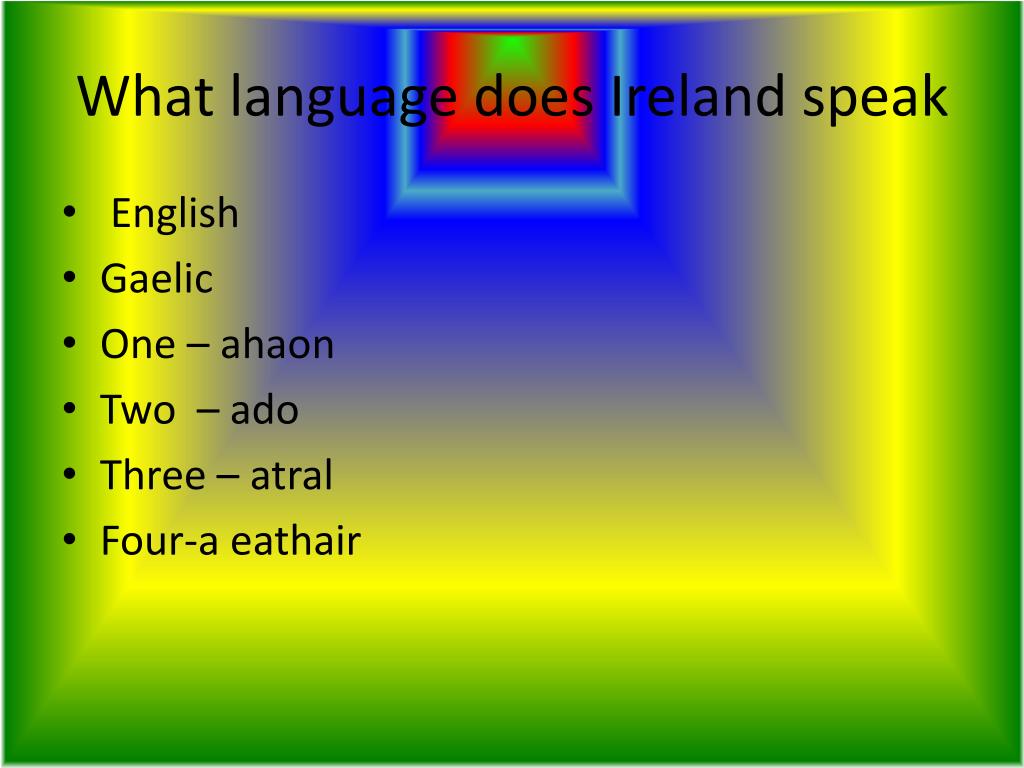Embark on a linguistic journey through the Emerald Isle as we explore the fascinating question: what language do they speak in Ireland? This comprehensive guide delves into the rich tapestry of languages that have shaped the cultural and historical landscape of this captivating nation.
From the ancient tongue of Irish Gaelic to the widespread use of English, we unravel the intricate relationship between language, culture, and identity in Ireland.
Overview of Languages Spoken in Ireland

Ireland’s linguistic landscape is diverse, shaped by historical and cultural influences. The primary languages spoken in Ireland are:
- Irish(Gaeilge): Ireland’s official first language, primarily spoken in Gaeltacht areas.
- English: The predominant language used in everyday communication, education, and business.
- Ulster-Scots: A regional dialect spoken in parts of Northern Ireland, with influences from both Scots and Irish.
- Shelta: A language spoken by the Irish Traveller community, with origins in Irish and English.
These languages reflect Ireland’s rich cultural heritage and the influences of various linguistic groups throughout history.
Irish Gaelic: The National Language

Irish Gaelic, also known as Irish, is the national and first official language of Ireland. It is a Celtic language belonging to the Goidelic branch of the Indo-European language family. Irish has a rich and complex history, dating back to the arrival of the Celts in Ireland over 2,500 years ago.
Irish was the dominant language of Ireland for centuries, but its use declined significantly during the period of British colonization. In the 19th century, the Irish language revival movement emerged, aiming to promote and preserve the language. As a result of these efforts, Irish was recognized as an official language of Ireland in 1937.
Official Status and Usage
Irish is one of the two official languages of Ireland, along with English. It is used in government, education, and the media. While English is the more commonly spoken language in Ireland, Irish is still widely used in certain areas, such as the Gaeltacht (Irish-speaking regions).
There are also efforts to promote the use of Irish in everyday life, such as through the use of Irish-language television and radio programs.
Efforts to Promote and Preserve Irish Gaelic
There are ongoing efforts to promote and preserve Irish Gaelic. These include:
- Education:Irish is taught in schools throughout Ireland, and there are also Irish-medium schools where all subjects are taught through Irish.
- Media:There are several Irish-language television and radio channels, as well as newspapers and magazines.
- Government Support:The Irish government provides funding for Irish-language initiatives, such as language classes and cultural events.
English: The Lingua Franca
English is the most widely spoken language in Ireland today. It is the official language of the Republic of Ireland and is also widely spoken in Northern Ireland. The widespread use of English in Ireland is a result of historical and political factors.
Historical Factors
English was first introduced to Ireland by the Normans in the 12th century. The Normans established a colony in Ireland and their language gradually became the language of the ruling class. Over time, English spread to the rest of the population, particularly in urban areas.
Political Factors, What language do they speak in ireland
The dominance of English in Ireland was further solidified by the British colonization of the country. From the 16th to the 20th centuries, Ireland was under British rule. During this time, English was the language of government, education, and business.
As a result, many Irish people became bilingual in English and Irish.
Impact on Irish Culture and Society
The widespread use of English in Ireland has had a significant impact on Irish culture and society. English has become the dominant language of communication, education, and media. This has led to a decline in the use of Irish, which is now spoken by only a small minority of the population.The
dominance of English has also had a significant impact on Irish identity. Many Irish people now identify more with English culture than with Irish culture. This is reflected in the popularity of English music, television, and film in Ireland.However, the decline of Irish has also led to a growing movement to revive the language.
There are now a number of Irish-language schools and organizations working to promote the use of Irish in everyday life.
Other Languages Spoken in Ireland: What Language Do They Speak In Ireland

Ireland is home to a diverse range of languages, reflecting its rich history and cultural influences. While Irish Gaelic and English are the most widely spoken languages, there are several other minority languages that play a significant role in Irish society.
Ulster Scots
Ulster Scots is a dialect of the Scots language spoken in the northern province of Ulster, particularly in counties Antrim, Down, and Armagh. It was brought to Ireland by Scottish settlers in the 17th century and has since developed its own unique characteristics.
Ulster Scots is recognized as a regional language under the European Charter for Regional or Minority Languages and is supported by the Ulster-Scots Agency.
Polish
Polish is the most widely spoken non-native language in Ireland, with a significant Polish community residing in the country. The presence of Polish speakers in Ireland is largely due to economic migration in recent decades. Polish has become an important part of Irish society, with Polish language classes and cultural events becoming increasingly common.
Language Policy and Education
The Irish government’s language policy aims to promote and protect both Irish Gaelic and English as official languages. This policy has significantly influenced education in Ireland.
Schools play a crucial role in promoting both Irish Gaelic and English. Irish Gaelic is a compulsory subject in primary and secondary schools, while English is the primary medium of instruction.
Language Immersion Programs
Language immersion programs are designed to provide students with an immersive experience in a specific language. In Ireland, these programs aim to enhance Irish Gaelic proficiency.
While language immersion programs have been successful in increasing Irish Gaelic fluency, they have also faced challenges. One challenge is the limited availability of qualified Irish Gaelic teachers. Additionally, some students may struggle to keep up with the pace of instruction in Irish Gaelic.
Language and Culture in Ireland
Language and culture are inextricably linked in Ireland. The Irish language has played a vital role in shaping Irish identity and national consciousness. It is a source of pride and a symbol of the country’s rich heritage.
The Irish language has had a profound impact on Irish literature, music, and art. Many of Ireland’s most famous writers, poets, and musicians have used the Irish language as a medium for their work. The language has also been a source of inspiration for Irish artists, who have used it to create beautiful and evocative works of art.
The Role of Language in Irish Literature
The Irish language has a long and rich literary tradition. The earliest Irish literature dates back to the 6th century AD and includes works such as the Táin Bó Cúailnge(The Cattle Raid of Cooley) and the Lebor Gabála Érenn(The Book of the Taking of Ireland).
In the 19th century, there was a revival of interest in the Irish language and culture. This led to the establishment of the Gaelic League, which worked to promote the use of the Irish language. Many of the leading writers of the Irish Literary Revival, such as W.B.
Yeats, Lady Gregory, and J.M. Synge, were members of the Gaelic League.
Today, the Irish language continues to be used by writers in Ireland. Some of the most well-known contemporary Irish writers who write in Irish include Máirtín Ó Cadhain, Nuala Ní Dhomhnaill, and Micheál Ó Conghaile.
The Role of Language in Irish Music
The Irish language has also played a vital role in Irish music. Many of Ireland’s most famous traditional songs are sung in Irish. The language has also been used by Irish musicians to create new and innovative forms of music.
Some of the most well-known Irish musicians who have used the Irish language in their work include The Chieftains, Clannad, and Enya. These musicians have helped to popularize the Irish language and culture around the world.
The Role of Language in Irish Art
The Irish language has also been a source of inspiration for Irish artists. Many Irish artists have used the language to create beautiful and evocative works of art.
Some of the most well-known Irish artists who have used the Irish language in their work include Jack B. Yeats, Louis le Brocquy, and Sean Scully. These artists have helped to raise the profile of the Irish language and culture on the international stage.
Conclusion
Our exploration of the languages spoken in Ireland unveils a vibrant and diverse linguistic landscape, reflecting the country’s complex history and cultural heritage. Understanding the role of language in Irish society provides a deeper appreciation for the unique identity and spirit of this remarkable nation.
General Inquiries
Is Irish Gaelic still spoken in Ireland?
Yes, Irish Gaelic remains an official language of Ireland and is spoken by a significant portion of the population, particularly in the Gaeltacht regions.
Why is English so widely spoken in Ireland?
English gained dominance in Ireland during centuries of British rule and became the primary language of government, education, and commerce.
Are there any other minority languages spoken in Ireland?
Yes, minority languages such as Ulster Scots, Polish, and Romanian are spoken by immigrant communities and have their own cultural significance.